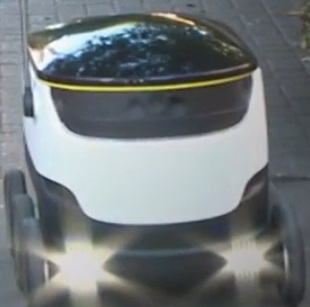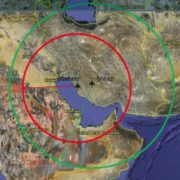A while back Microsoft bought out Skype for an astounding $8.5 Billion. Ever wonder what the founders of Skype are doing with all that money? They figuring out to use Unmanned Ground Vehicles (UGV) to deliver groceries. Seriously.
Skype co-founders Ahti Heinla and Janus Friis have built a small delivery UGV, and slapped it with the glorious label “Starship.” It goes about 4 MPH, carries two grocery bags (20lbs), and needs to be recharged every 30 minutes. It has a full compliment of cameras, GPS, gyroscopes, and on-board mapping data. While it has autonomous capabilities, it can also be remotely operated by a human.
We here at AMREL are always interested in new applications for UGVs, since we make Operator Control Units (OCU) for them. As much as we wish this enterprise to succeed, it’s hard to see how. For one thing grocery delivery services have a nasty habit of going belly up. Forbes even ran an article titled 10 Reasons Why Online Grocery Shopping Is Failing.
The Starship UGV travels by sidewalks. Is that even legal in most cities? What about the neighborhoods that do not have sidewalks (a fairly common occurrence in rural areas and the Western US)?
We here at AMREL are always interested in new applications for UGVs, since make Operator Control Units for them. Mostly, the economics make no sense of all. The Starship UGV, with its advanced sensor package and autonomous capabilities, must be a relatively expensive machine. With supermarkets being notorious for low-profit margins, what kind of return on investment can be expected? Factor in the fact that the Starship can only make one delivery at a time, and that it’s slow speed and short battery life gives it a very limited operating range, this little UGV is looking less practical all the time.
Also, I think a lot of hormonally challenged young men might decide that the UGV looks more like a soccer ball than a Starship, and act accordingly.
To be fair, this service is being tried out in England, which may make more business sense. People there shop more frequently than Americans and tend to live closer to small neighborhood stores. Also, they may be less prone to vandalize helpless, innocent UGVs (although I wouldn’t count on that).
I think that there is a future for UGVs in home delivery. I could easily imagine a delivery truck acting as a mothership for a a number of UGVs delivering dry goods in a particular neighborhood.
But groceries? With an aging population, there is a real need for such a service, but I think supermarkets would be better off hiring a teenager with a bicycle or a car.
To learn more, watch video below.












